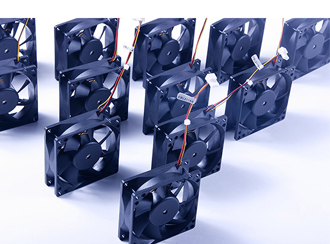The key component of any electronic or electrical system is the cable assembly/cable harness - but it is usually one of the last components to be addressed. When designing a system, cable assemblies should be addressed early in the design phase in order to specify the best design for the application at hand. There will be many components involved in the design of the assembly, each of which will have an impact on the performance of the finished cable assembly or harness. Using over-designed or under-designed components will have a negative impact on the performance of the finished system.
The number and type of circuits or conductors included in the assembly will depend on the application for which the assembly will be used. There are several options for the type of conductive material used, the stranded wire used to construct the conductor, and the plating applied to the conductive material.

Cable Assemblies
The most versatile and widely used conductor material is copper. Copper is compatible with a variety of coatings to prevent corrosion and aid in the termination process. Options such as copper-clad steel and copper alloys are available if the higher fracture strength of the conductor is a concern. These materials still use copper but add steel or alloys such as cadmium, chromium, and zirconium to increase bend life and fracture strength. In some limited applications, stainless steel can be used as a conductor, but stainless steel itself is a less conductive material than copper and may have to be plated to improve its conductivity. If you want to get more information about the best cable assemblies wholesale, welcome to contact us today or request a quote.
Bare copper is prone to corrosion when exposed to the atmosphere, so most conductors are coated with various coatings to prevent corrosion and allow copper to be used in more rigid installations. One of the most popular coatings is tin, which is used to retard corrosion of bare copper and is the least expensive coating to help with the termination process. If the cable assembly is to be used in higher temperature environments, coatings such as silver or nickel can be used to allow the conductors to be used reliably at temperatures of 200°C and 260°C, respectively.
The conductors used in the assembly can consist of only a single strand of solid conductive material, or they can be made up of many smaller conductors. Stranded conductors were developed as a means of overcoming the rigidity of solid conductors and are available in a variety of variants, and the application of the assembly will determine which type of construction to use. For any given size of the conductor, the larger the number of strands and the smaller the diameter, the more flexible the conductor.
Each conductor in a cable assembly should be designed for the specific application for which it is intended. For example, if the conductor is to provide electrical power, the amount of current it will carry needs to be considered before determining the size of the conductor to be used. If the conductor is expected to allow for the transmission of signals, the speed of the signal and the length of the assembly need to be considered to determine the correct construction of the conductor.
 Previous:
ISO13485:2016 Certificate
Previous:
ISO13485:2016 Certificate
Copyright © Xiamen New East Asia Electronic Enterprise Co. (NEAEE), Ltd. All Rights Reserved Sitemap |